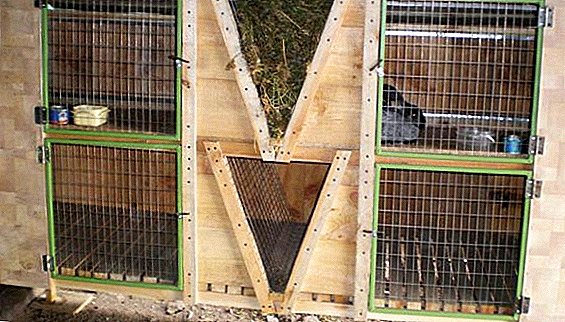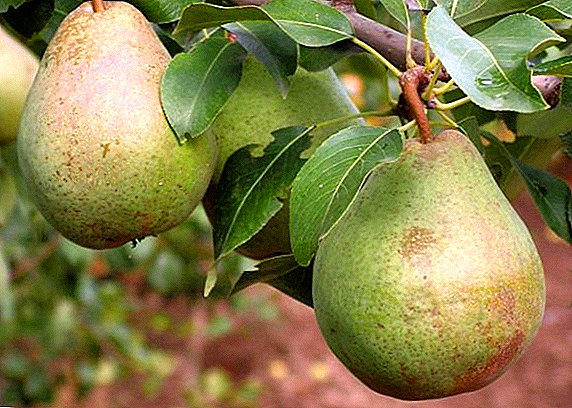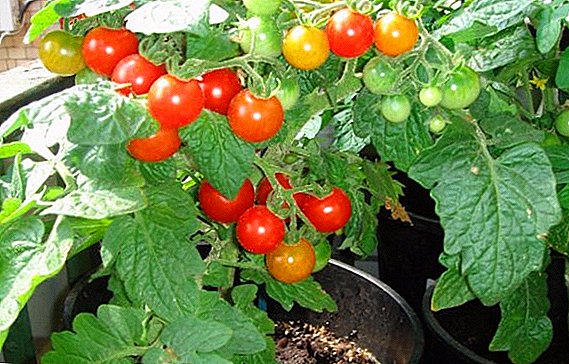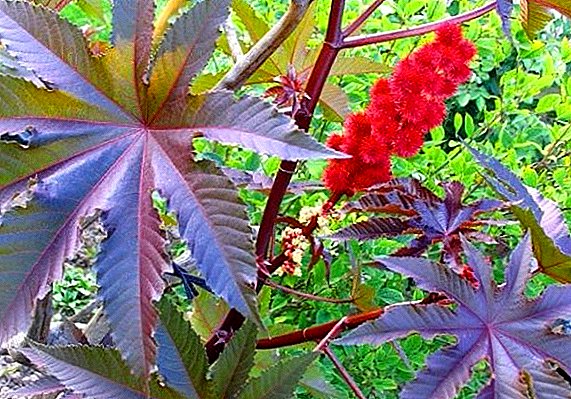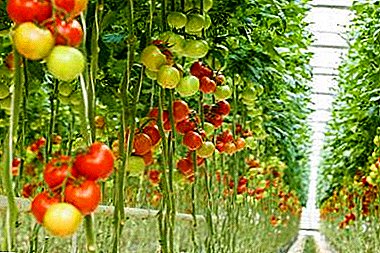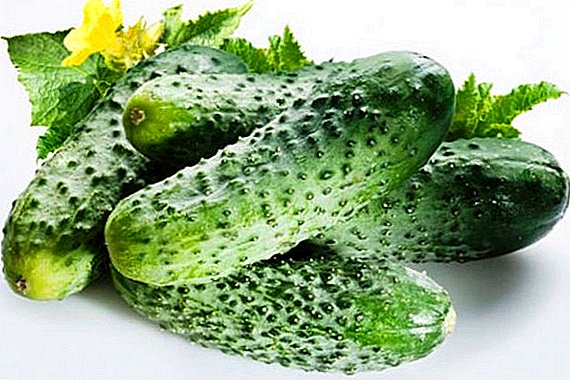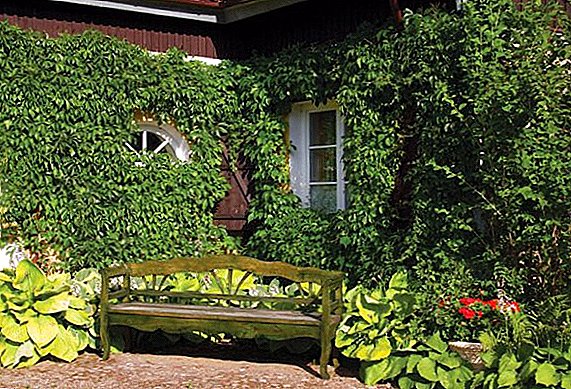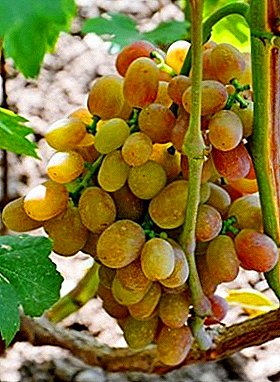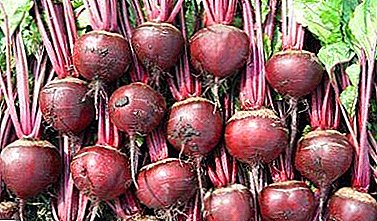
Beet (beet) is grown everywhere in our country, even in the Far North, because it is an unpretentious crop, and it is also a useful and nutritious vegetable. Breeders received a huge number of varieties and hybrids of red beet, among which are the Boro F1 hybrid. This article will tell you what the F1 hybrid is and how it was obtained, how it differs from other varieties, what are its pros and cons, how to properly grow, collect, store, and what diseases and pests can threaten it and how cope with them all.
Detailed characteristics and description of the variety
This is a mid-season hybrid of red beet with a growing season of 110-115 days. The rosette of leaves is small, erect, well developed. Root crops of a round form with a diameter of 8-10 cm, can reach the weight of 110-210 grams. The flesh of the beet is bright red without rings, the skin is dark and smooth. The average yield of the variety is 60-80 tons per hectare.
Breeding history
Variety Boro F1 bred from Holland. This is a new hybrid, which is superior in its characteristics to Pablo F1 beet cultivar familiar to many gardeners.
What is the difference from other types of buriak?
Boro F1 beet hybrid is more resistant to sudden temperature changes and diseases. Root crops of high quality and leveled, with a high content of sugars.
Advantages and disadvantages
Merits:
- Hybrid Boro F1 well kept, suitable for mechanical cleaning.
- Root "Boro" sweet, juicy, have a thin peel, well cleaned raw and boiled.
- The maroon color of the vegetable persists after cooking.
Reference! The disadvantages include a small grain of vegetable flesh.
What and where is it used for?
Hybrid Boro F1 is recommended for fresh use, home and industrial processing, for winter storage, and is also suitable for the production of food dyes.
Step by Step Growing Instructions
Where and for how much seed can be purchased?
The cost of a packet of seeds of Boro F1 beet weighing 1.0 grams on the market averages 30-40 rubles, you can buy it in the stores of Moscow Lawn Zone, First Seeds, Yield Garden and others, and in the stores of St. Petersburg Manor, Praktik Garden, Live Lawn and others.
Landing time
Sowing in open ground is carried out in mid-May. This variety of beets can be sown before winter - in late October - early November.
Choosing a place
 When choosing a site for sowing beets, a number of factors are taken into account. Plots located in the lowlands that are flooded during heavy rains are not suitable for this crop. It should be an open, well-lit place. You need to know what crops were grown in the planned plot last season.
When choosing a site for sowing beets, a number of factors are taken into account. Plots located in the lowlands that are flooded during heavy rains are not suitable for this crop. It should be an open, well-lit place. You need to know what crops were grown in the planned plot last season.
It is better not to sow the beet after the cabbage, but after the potatoes, cucumbers, zucchini, pumpkins and greens will be a good harvest. "Tolerate" beets, if before that on the site grew carrots, peas and onions.
What should be the soil?
For the "Borough" resemble light loose soil with normal acidity:
- loamy;
- sandy loam;
- black earth
If the soil is too clayey, sand will help, otherwise the roots will grow fibrous, hard and bitter.
Reference! The growth of a large number of colza, wild sorrel and horsetail indicates acidification of the soil. Grown on such land beet roots will be small and ugly shape. Adding lime and dolomite flour to the soil will reduce its acidity.
Landing
Seeds are buried in the ground at a depth of 2-4 cm at a distance of 5 to 10 cm from each other, the width between the rows is 25-30 cm.
It is better that the distances between plants are not very large., otherwise the roots will be large, which are cooked longer.
Sow better in cloudy weather, or in the evening. After sowing the land is recommended to roll a little.
In order to save garden space, sowing beets is often used between rows of cucumbers or tomatoes.
In dry weather, the prepared ridge is humidified for an hour or two before sowing; in rainy weather, it is worth moistening the grooves only. 3-4 days after sowing it is better to loosen the soil with a rake, it will provide friendly shoots.
Temperature
- Already at air temperature of 3-4 ° C, beet seeds will germinate, but within a month.
- At 6-7 ° C shoots appear in 10-15 days.
- When the temperature stabilizes to 15-20 ° C, the seeds will germinate in a week.
It is better to sow beets when the soil temperature at a depth of 6 cm is above 7-8 ° C. Shoots do not stand frosts.
Watering
Beets do not like waterlogging, including the Boro F1 hybrid. At the same time, young seedlings do not like it when the soil dries out. Watering is necessary, depending on weather conditions, in dry summer there may be 5-6 waterings. A month before harvesting, watering the beets stop.
Top dressing
 The main elements that are needed beets:
The main elements that are needed beets:
- nitrogen;
- potassium;
- phosphorus.
After thinning the seedlings, the beets are fertilized with mineral fertilizers (with nitrogen), after closing the tops, potash-phosphorus fertilizers are applied without using nitrogen.
In the absence of complex mineral fertilizers, ash is applied to the soil.which is pre-mixed with compost. At 1m2 plot - 3 cups of ash.
Other care measures
After the appearance of the first leaves of beets to thin the seedlings. During this period, until the closure of the tops, plants need constant weeding, loosening between the rows. It is necessary to loosen carefully, especially while the crops are low, this is done with a simple ordinary old fork. Mulching beds with peat or cut grass will help reduce the amount of watering and loosening.
Harvesting
Harvesting "Boro" is made from July to September. It is important not only to grow, but also to properly harvest.
When harvesting beets, root crops should be undermined with a shovel or pitchfork and lifted along with the soil. After that, gently pull out the vegetables for the tops or choose hands. Harvest better in dry weather and frost, as even a small frost can ruin the tops of root crops, which will make vegetables unsuitable for storage. After collecting the dried vegetables.
Some rules for drying beets:
- In dry warm weather, it is better to dry on a bed for two to four hours, but no more.
- If harvesting occurs in rainy weather or root crops are harvested from damp ground, then it is better to dry in a well-ventilated area, scattering the harvest in one layer. Drying period indoors is from 2-3 days to a week.
After the crop has been dug and dried in the air, it is first processed:
- Carefully remove from the root crops lumps of clay and earth.
- Cut the tops, leaving a small "tail" up to 1 cm in size. Often the tops are simply unscrewed by hand, which is better not to do.
- Remove the side roots without damaging the root itself.
- The main root is cut a little, leaving it up to 5-7 cm long.
After the first processing of the crop, the damaged and rotten roots are removed, and only strong and not large ones are left for storage. Large fruits - more fibrous, long boiled and stored for not so long.
Remaining after the initial cleaning of the roots of the ground even help their storage. It is necessary to clean only lumps of earth, which can damage the neighboring fruits., and more friable lumps of the soil and are showered.
Storage
Store beets in a dark cool room, for example, in cellars, basements, less often on balconies and in the refrigerator. Outside the premises, root vegetables are buried in trenches and pits.
We invite you to watch a video on how to store beets:
Diseases and pests
Important! The Boro beet variety is distinguished by its increased resistance to various adverse factors, but there is a likelihood of some vegetable diseases caused by high acidity of the soil.
Possible defects in the root:
- scab (cracks and growths on the fruit);
- fomoz (spots on the leaves);
- blackening of the pulp;
- Root, "black leg" (at the seedling stage);
- voids in the root.
All of the above can sometimes occur because of the large amount of nitrogen or with increased doses of fertilizing, so you need to correctly fertilize the soil.
Prevention of various problems
 Wheatgrass growing around the site and the increased acidity of the soil sometimes become a comfortable environment for the habitat of the larvae of beet pests that literally turn any root vegetable into a sieve.
Wheatgrass growing around the site and the increased acidity of the soil sometimes become a comfortable environment for the habitat of the larvae of beet pests that literally turn any root vegetable into a sieve.
To reduce the number of these pests of beets, you need to regularly:
- choose the larvae manually when digging;
- use potato tuber traps;
- destroy wheatgrass around the site;
- apply lime to the soil.
If there are few weeds, and the soil was treated correctly in the spring and autumn, then the attack of pests can be avoided.
Boro F1 beetroot is tasty and smooth root vegetables, fruitful and steady against adverse factors a grade. With competent agrotechnics, the Boro F1 hybrid will certainly please gardeners, who will be able to provide themselves with fresh crops and stocks for the winter.
- Wodan F1;
- Kestrel F1;
- Mulatto;
- Detroit;
- Bordeaux 237.


